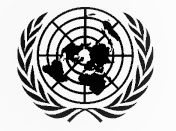
* The New START Treaty entered into effect on 5 February 2011 for a period of 10 years. It can be extended for up to five years, unless it is replaced earlier by another agreement.
Source: Federation of American Scientists
Acronyms: SALT I=Strategic Arms Limitation Treaty; INF=Intermediate-Range Nuclear Forces Treaty; START=Strategic Arms Reduction Treaty; SORT=Strategic Offensive Reductions Treaty; New START=Treaty on Measures for the Further Reduction and Limitation of Strategic Offensive Arms.
Nuclear weapons are the most dangerous weapons on earth. One can destroy a whole city, potentially killing millions, and jeopardizing the natural environment and lives of future generations through its long-term catastrophic effects. The dangers from such weapons arise from their very existence. Although nuclear weapons have only been used twice in warfare—in the bombings of Hiroshima and Nagasaki in 1945—about 13,400 reportedly remain in our world today and there have been over 2,000 nuclear tests conducted to date. Disarmament is the best protection against such dangers, but achieving this goal has been a tremendously difficult challenge.
Regional Nuclear-Weapon-Free Zones (NWFZ) have been established to strengthen global nuclear non-proliferation and disarmament norms and consolidate international efforts towards peace and security.
The United Nations has sought to eliminate such weapons ever since its establishment. The first resolution adopted by the UN General Assembly in 1946 established a Commission to deal with problems related to the discovery of atomic energy among others. The Commission was to make proposals for, inter alia, the control of atomic energy to the extent necessary to ensure its use only for peaceful purposes. The resolution also decided that the Commission should make proposals for “the elimination from national armaments of atomic weapons and of all other major weapons adaptable to mass destruction.”
A number of multilateral treaties have since been established with the aim of preventing nuclear proliferation and testing, while promoting progress in nuclear disarmament. These include the Treaty on the Non-Proliferation of Nuclear Weapons (NPT), the Treaty Banning Nuclear Weapon Tests In The Atmosphere, In Outer Space And Under Water, also known as the Partial Test Ban Treaty (PTBT), the Comprehensive Nuclear-Test-Ban Treaty (CTBT), which was signed in 1996 but has yet to enter into force, and the Treaty on the Prohibition of Nuclear Weapons (TPNW) , which will enter into force on 22 January 2021.
A number of bilateral and plurilateral treaties and arrangements seek to reduce or eliminate certain categories of nuclear weapons, to prevent the proliferation of such weapons and their delivery vehicles. These range from several treaties between the United States of America and Russian Federation as well as various other initiatives, to the Nuclear Suppliers Group, the Missile Technology Control Regime, the Hague Code of Conduct against Ballistic Missile Proliferation, and the Wassenaar Arrangement.
The United Nations Secretariat supports efforts aimed at the non-proliferation and total elimination of nuclear weapons. “Securing Our Common Future: An Agenda for Disarmament” considers nuclear weapons in the framework of “disarmament to save humanity.” In the agenda, the Secretary-General calls for resuming dialogue and negotiations for nuclear arms control and disarmament. He also supports extending the norms against nuclear weapons, and in that regard appeals to States that possess nuclear weapons to affirm that a nuclear war cannot be won and must never be fought. Finally, the agenda proposes preparing for a world free of nuclear weapons through a number of risk -reduction measures, including transparency in nuclear-weapon programmes, further reductions in all types of nuclear weapons, commitments not to introduce new and destabilizing types of nuclear weapons, including cruise missiles, reciprocal commitments for the non-use of nuclear weapons and reduction of the role of nuclear weapons in security doctrines. To further the agenda, concrete actions are proposed.
The Secretary-General’s policy brief on A New Agenda for Peace (NAFP) emphasizes the urgency of States recommitting to the pursuit of nuclear disarmament and reversing the erosion of international norms against the spread and use of nuclear weapons. It also includes a call for States possessing nuclear weapons to commit to never use them, take, take steps to avoid mistakes or miscalculations and develop transparency and confidence-building measures. The policy brief also stresses the importance of reducing the role of nuclear weapons in national security doctrines. It also calls on States to engage in dialogue on strategic stability and to elaborate next steps for further reductions of nuclear arsenals, and that States with the largest nuclear arsenals have a responsibility to negotiate further limits and reductions on strategic nuclear weapons. The NAFP soot as the main peace and security input from the Secretary-General for Member States’ consideration ahead of the Summit of the Future.
The Pact for the Future, adopted at the 2024 Summit of the Future, contains the first multilateral recommitment to nuclear disarmament in over a decade, with a clear commitment to the goal of the total elimination of nuclear weapons. It contains pledges to strengthen the disarmament and non-proliferation architecture, accelerate the full and effective implementation of respective nuclear disarmament and non-proliferation obligations and commitments, work to prevent any erosion of existing international norms and take all positive steps to prevent nuclear war. The Pact aligns nuclear disarmament with broader goals of sustainable development and peace, reflecting the global vision for a safer, more inclusive future.

